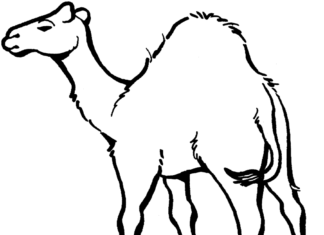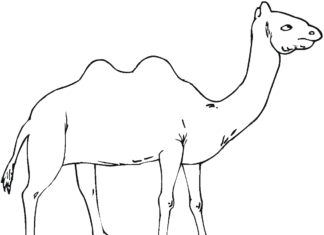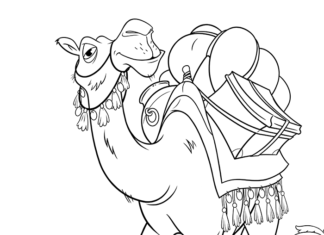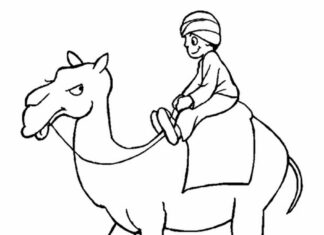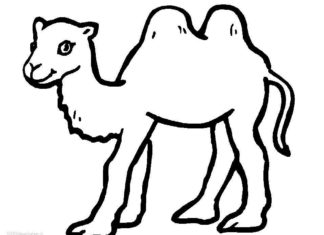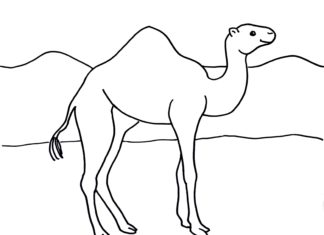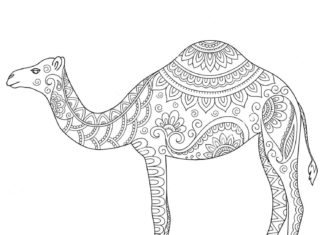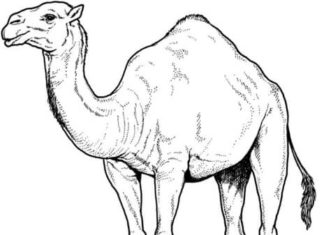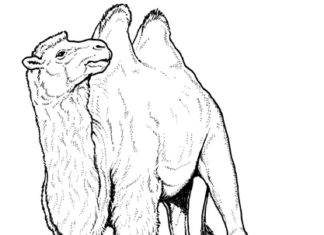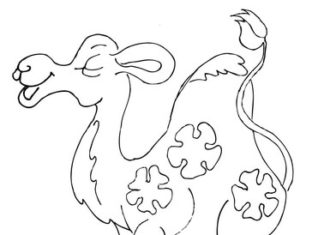In this section you will find many interesting camel paintings. Choose different pictures and paint freely as you like. Camels in their wild state we can meet only in Central Asia. However, in the coloring pages version you will meet them all in our service. Mostly we meet camels with two humps, because the species of camels with one hump became extinct long time ago.
Coloring Book Camel
Information
The camel is adapted to living in warmth. It is not afraid of dry and hot climate, because it feels best in such conditions. In ancient times, camels served people as mass transport, because they could carry loads weighing up to 500 kg. In the present day in Asia, they are used as a source of milk, beef and meat.
An adult animal can weigh up to 600 kilograms and its body can reach a length of between 220 and 350 cm. The tail is also not the shortest, as it reaches a length of 40 to even 70 cm.
It is interesting to note that camel milk contains three times more vitamin C than cow's milk and camel milk has an effect on lowering cholesterol and blood pressure.
The camelid mammal can reach speeds of up to 70 mph when running.
Trivia
- Species: There are three main species of camels: the dromedary (single-humped), the bactrian (double-humped) and the wild camel (Camelus ferus), which is a rare and endangered species.
- Humps: The camel's humps serve to store fat, not water, as is often mistakenly thought. This fat can be converted into water and energy when other food sources are unavailable.
- Strength: Camels are known for their ability to survive in extreme conditions, such as hot and dry deserts. They can withstand temperatures exceeding 40 degrees Celsius and survive without water for up to two weeks.
- Water: Camels can drink a lot of water at once, up to 40 liters in a few minutes. In addition, their body is very efficient at conserving water, for example, by limiting the excretion of sweat.
- Adaptability: Camels have many physiological and anatomical features that allow them to adapt to harsh desert conditions, such as thick skin that protects them from heat and sand, and special eyelids and eyelashes that protect their eyes from sand.
- Diet: Camels are herbivores and feed on dry and coarse plants that other animals often ignore.
- Height: Camels are among the tallest land animals. The dromedary can reach a height of up to 2 meters at the withers, and the bactrian up to 2.3 meters.
- Speed: Despite their size, camels can reach speeds of up to 65km/h when sprinting and maintain speeds of 40km/h for extended periods.
- Domestication: Camels have been domesticated for thousands of years and have been used by humans to transport goods, as a means of transportation and as a source of food (meat, milk).
- Camel milk: Camel milk is more nutritious than cow's milk, contains less cholesterol and is rich in vitamins and minerals. In some countries it is considered a cure for various ailments.

